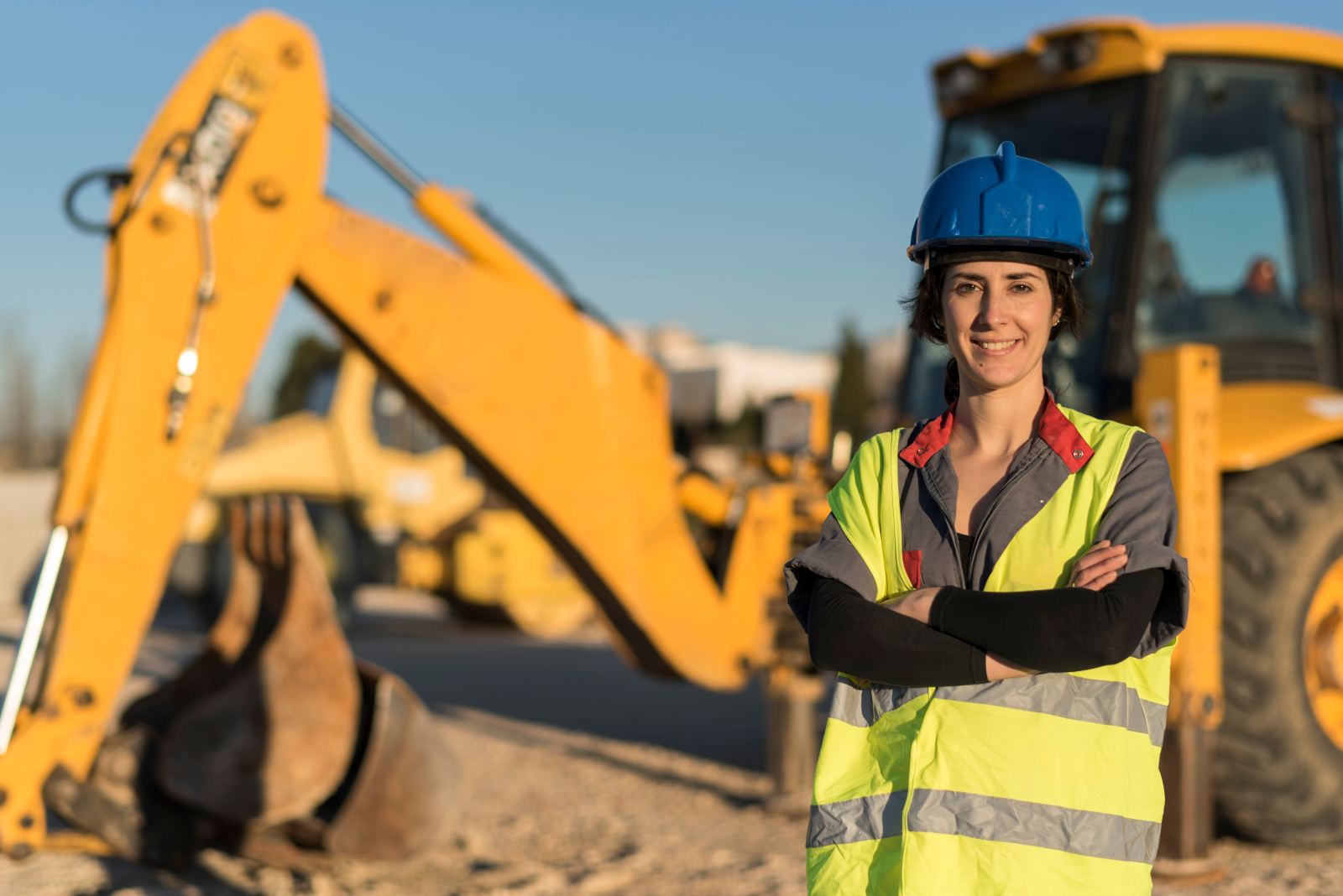
Today is International Women’s Day, a day in which people across the globe come together to celebrate women’s achievements, raise awareness of issues affecting women and girls, and take action which promotes greater equality. This year, the campaign, which has the theme of #BreakTheBias, has issued the following statement:
“Imagine a gender equal world. A world free of bias, stereotypes, and discrimination. A world that is diverse, equitable, and inclusive. A world where difference is valued and celebrated. Together we can forge women’s equality. Collectively we can all #BreakTheBias.“
Taking this as our inspiration, in this week’s blog, we’re looking at some of the key issues which affect women who enter the historically male-dominated trades within the built environment.
Under-representation
In 2021, the top five most popular trade jobs for women were painters and decorators, plumbing and heating, electricians, gardeners and carpenters. (GoCompare)
However, that doesn’t mean women are even close to reaching a comparative level of representation with their male counterparts in these or any other similar trade. In fact, women only make up 1% of carpenters and less than 2% of electricians, plumbers and metal workers.
Apart from cleaning (where 82% of the workforce are female), women make up less than 10% of the workforce in every other role within trades and construction. (Careersmart)
Intimidation and gender discrimination
While many tradeswomen are dedicated to their profession and thoroughly enjoy it, experiences of intimidation, sexism and gender discrimination are common. Anecdotally, tradeswomen talk of instances of being challenged about what they can and can’t do, being judged for what they do, and sometimes being prevented from doing their job because they’re a woman.
According to ‘Rated People’s Home Improvement Trends Report 2022:
- 39% (over 1 in 3) tradeswomen experience gender discrimination.
- Almost one in 10 tradeswomen said some customers refused to allow them do a job after seeing they were a woman.
- One in seven tradeswomen have concerns for personal safety.
- Almost 10% face social stigma and judgement from friends and family because of what they do.
Unequal pay
There are fifteen key trades in the industry where, on average, women earn 72% of what men do. There are only two fields in which women earn more than men (gardening and groundskeeping) and, in may trades that average drops much lower. Here are a few figures to contemplate:
In plumbing, women earn 61% of a man’s salary. For women in construction and building trades, this falls to 57%. For female electricians, it’s 54%; in carpentry it’s 53%; and for floorers and wall tilers, women’s earnings drop right down to 41% of what a man takes homes – the biggest gender pay gap out of all trades!
Women in demand
While none of this sounds very promising for those International Women’s Day hopes of a gender equal world, free of bias and discrimination, there is some good news. Among UK homeowners, demand for female tradespeople is growing and, although there’s still a long way to go, more women are now entering the industry than ever before.
- 46% of homeowners say they would definitely hire a tradeswoman (with 43% reporting no preference, and just 11% stating a preference for a tradesman).
- One in three women say they would feel safer hiring a tradeswoman to carry out work in their home.
- In 2021, admissions of women on trade courses increased by 27%.
- Over the last decade, the number of women in trades has increased by 120%.
What next?
While some within the trades/ construction industry complain that women just don’t apply for the jobs, there has to be a recognition that this is often because of issues outlined above (intimidation, discrimination, unequal pay etc) which unsurprisingly puts many women off. There are, however, a number of things the industry could do to improve this. Here are just a few ideas:
- Write job adverts in ways that will encourage women, for instance by using gender neutral language like ‘tradesperson’ or ‘tradeswomen and tradesmen’.
- Reach out to schools/ colleges to raise awareness of what trade careers can offer and actively support young women to consider such career paths.
- Take steps to make workplaces more inclusive – e.g. offering flexible working arrangements, equal opportunities and equal pay.
Taking any action which encourages more women into trade professions should not only be seen as a way of helping our world to reach a state of greater gender equality and less discrimination. As great as that might be, it’s also worth noting that it presents another key benefit for the industry – offering a practical solution to the workplace shortages that are affecting almost every trade. That’s got to be a win-win situation!
If you have other ideas about how this might be achieved, share your thoughts with us over on our Facebook or LinkedIn pages.
Find out more about International Women’s Day here.
08.03.2022
Feature image: FotoAndalucia/Shutterstock.com








